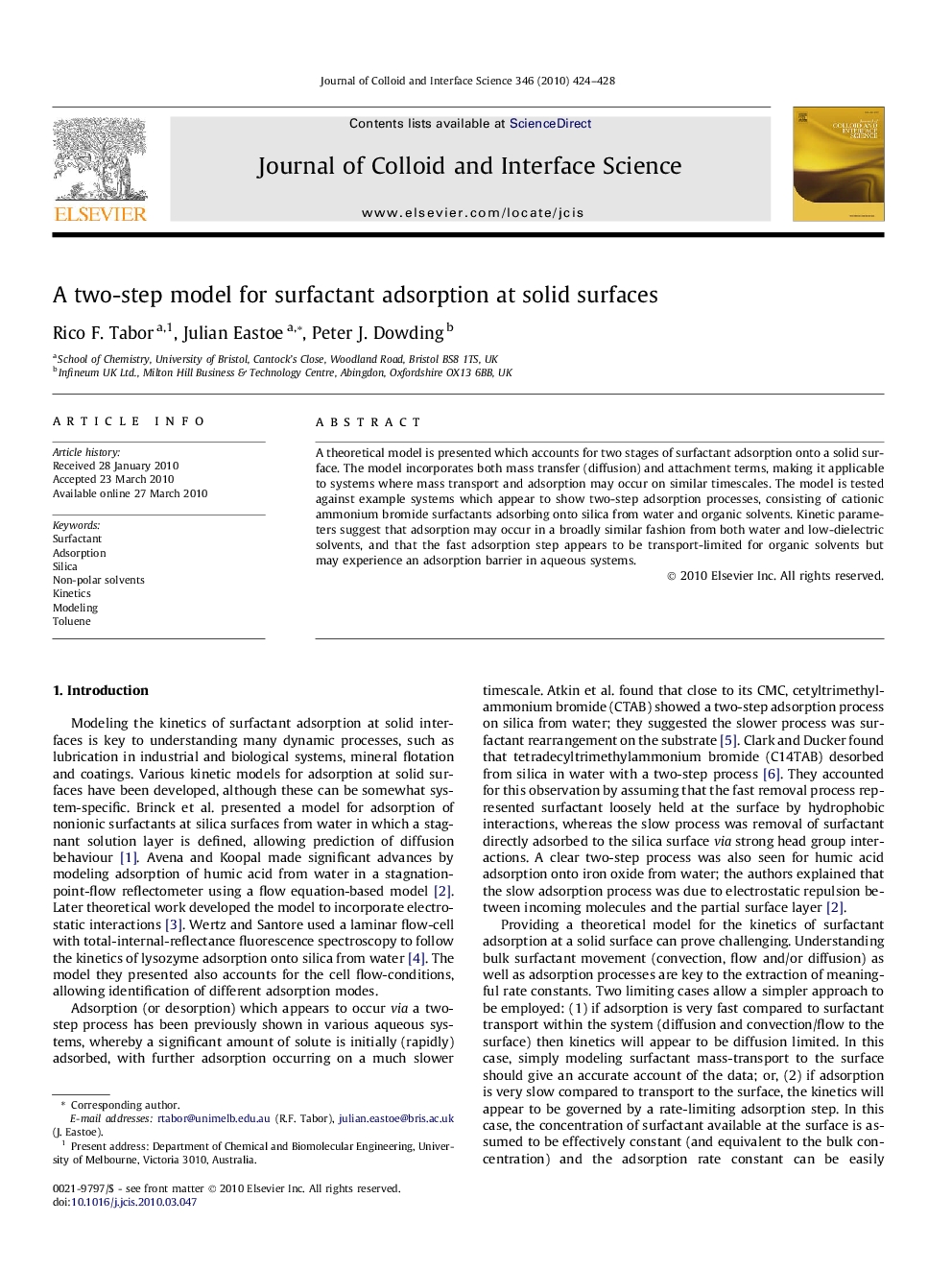| Article ID | Journal | Published Year | Pages | File Type |
|---|---|---|---|---|
| 609782 | Journal of Colloid and Interface Science | 2010 | 5 Pages |
A theoretical model is presented which accounts for two stages of surfactant adsorption onto a solid surface. The model incorporates both mass transfer (diffusion) and attachment terms, making it applicable to systems where mass transport and adsorption may occur on similar timescales. The model is tested against example systems which appear to show two-step adsorption processes, consisting of cationic ammonium bromide surfactants adsorbing onto silica from water and organic solvents. Kinetic parameters suggest that adsorption may occur in a broadly similar fashion from both water and low-dielectric solvents, and that the fast adsorption step appears to be transport-limited for organic solvents but may experience an adsorption barrier in aqueous systems.
Graphical abstractIn some cases, surfactant adsorption at solid surfaces appears to show a two-stage kinetic profile, suggesting two distinct processes may occur.Figure optionsDownload full-size imageDownload high-quality image (42 K)Download as PowerPoint slide
